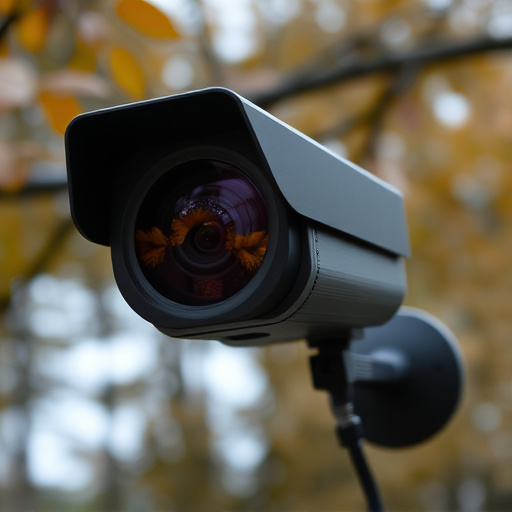Concealed cameras offer homeowners a discrete way to ensure their children's safety while at home, strategically capturing activities in living rooms, kitchens, and playrooms. Placement near entry points allows monitoring of access and detection of unauthorized individuals. However, installing these cameras requires careful consideration of legal and privacy aspects, with compliance to local regulations and transparent communication essential to avoid legal consequences. Responsible use involves strategic placement, blending cameras into the environment, and optimizing settings for clear, detailed images without compromising comfort or privacy.
Discover the power of concealed cameras for babysitter monitoring with our comprehensive guide on pinhole camera installation. Learn how these discrete devices offer a safe, cost-effective solution for home monitoring. We’ll explore legal considerations and privacy concerns to ensure responsible setup. From ideal installation spots to optimizing your system, we provide essential tips for maximizing the benefits of pinhole cameras.
- Understanding Pinhole Cameras for Home Monitoring
- Legal Considerations and Privacy Concerns
- Ideal Installation Spots for Concealed Babysitter Cameras
- Setting Up and Optimizing Your Pinhole Camera System
Understanding Pinhole Cameras for Home Monitoring
Pinhole cameras, also known as concealed or hidden cameras, have become increasingly popular tools for home monitoring and security. These compact devices offer a discrete way to keep an eye on your property, making them ideal for various purposes, including babysitter monitoring. By installing pinhole cameras in strategic locations around the house, homeowners can gain peace of mind, ensuring the safety and well-being of their children while they are at home with a caregiver.
For effective babysitter monitoring, consider placing pinhole cameras in common areas like living rooms, kitchens, or playrooms. These spaces allow for clear visibility and help capture any unusual activities. Additionally, strategically positioning cameras near entry points, such as doors and windows, enables you to monitor access and detect any unauthorized individuals. Concealed cameras provide a non-intrusive solution, allowing your family to go about their daily routines while you remain vigilant from afar.
Legal Considerations and Privacy Concerns
When installing a pinhole camera for babysitter monitoring, it’s crucial to consider legal and privacy aspects. In many regions, the use of concealed cameras in homes is governed by strict regulations, particularly when it involves areas considered private, like children’s bedrooms or bathrooms. Before setting up such a device, homeowners should familiarize themselves with local laws and obtain any necessary permits. Failure to do so could result in legal consequences, including fines or charges for invasion of privacy.
Privacy concerns are paramount, especially when the cameras are intended for monitoring babysitters. It’s essential to ensure that all parties involved—including the babysitter—are aware of the camera’s presence and its purpose. Transparent communication fosters trust and protects everyone from misunderstandings or potential legal issues. Additionally, storing footage securely and deleting it after a reasonable period is crucial to maintaining privacy standards.
Ideal Installation Spots for Concealed Babysitter Cameras
When it comes to installing concealed cameras for babysitter monitoring, discretion is key. Ideal spots offer unobstructed views while remaining hidden from prying eyes. Consider strategically placing cameras in common areas like living rooms or hallways, where they can capture clear images of any activity. Additionally, near play areas or bedrooms can be strategic choices, allowing you to monitor interactions and ensure the safety of your child.
Remember, these concealed cameras should blend seamlessly into the environment, so opt for locations that are not immediately obvious. For instance, mounting them inside bookshelves, behind artwork, or under tables can provide valuable footage while maintaining privacy. This approach allows parents to gain insights into their babysitter’s behavior and interactions with their children without compromising on comfort or security.
Setting Up and Optimizing Your Pinhole Camera System
Setting up a pinhole camera system, especially for concealed babysitter monitoring, requires careful consideration of location and optimization techniques. The first step is to choose a strategic spot within or near the area you wish to observe, ensuring discreet placement to avoid detection. Common locations include nursery windows, play areas, or even behind furniture to capture natural activity.
Once positioned, optimize your camera’s settings for clear and detailed images. Adjust lighting conditions by utilizing soft, natural light whenever possible, as it reduces glare and improves image quality. Fine-tune the focus and resolution settings to ensure you capture every moment vividly. With these adjustments, your pinhole camera will provide valuable insights while maintaining a discreet presence, making it an ideal tool for responsible babysitter monitoring.
When setting up a pinhole camera for babysitter monitoring, it’s crucial to balance privacy considerations with optimal placement. By understanding both the technology and legal aspects, you can ensure a discreet yet effective system. Ideal locations include areas within reach but out of direct view, such as near play areas or in strategic corners. Regular optimization ensures clear, reliable feeds, enhancing your peace of mind without infringing on personal space. Remember to respect privacy laws and inform all occupants when installing concealed cameras for babysitter monitoring.
